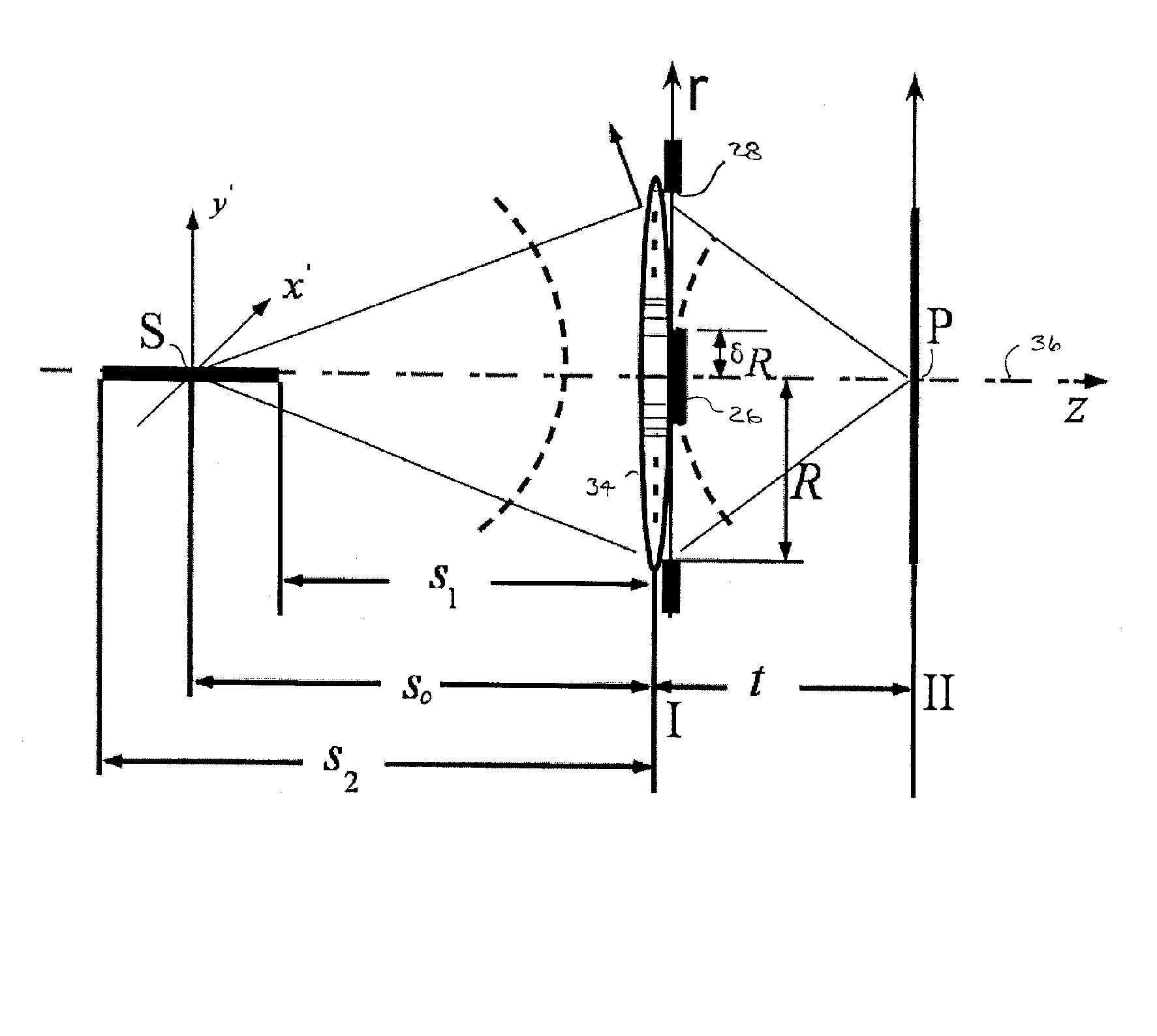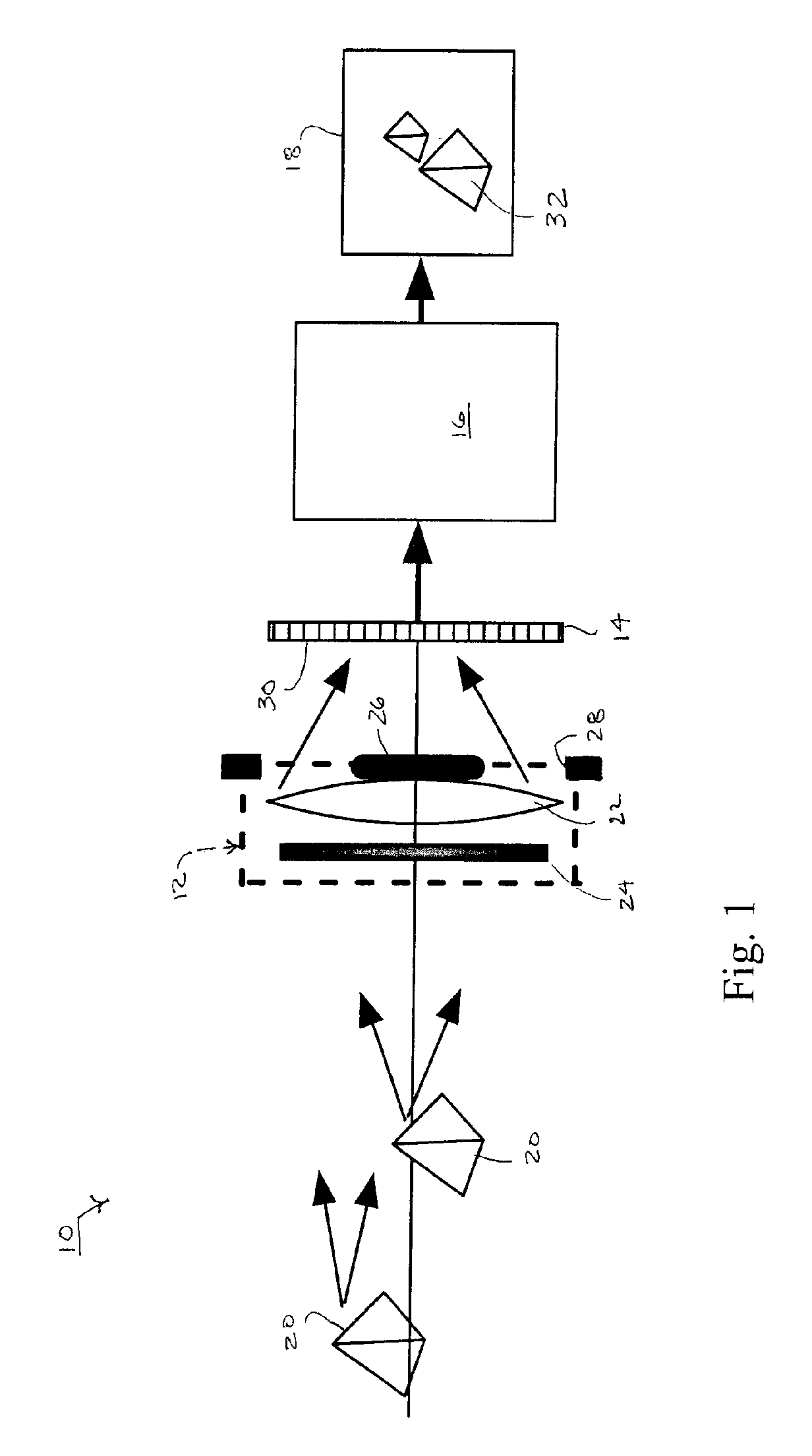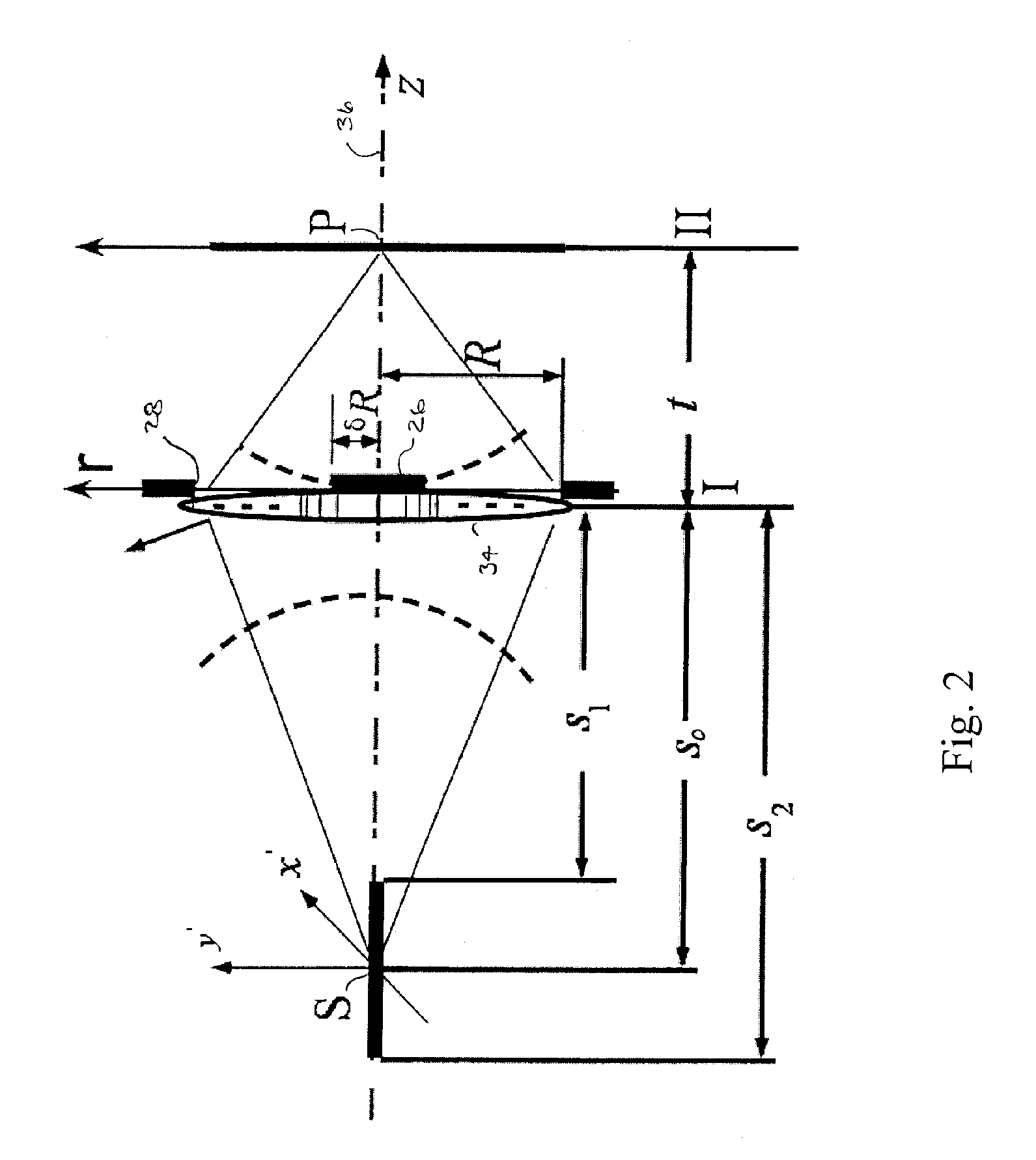Extended depth of field using a multi-focal length lens with a controlled range of spherical aberration and a centrally obscured aperture
a multi-focal length, centrally obscured technology, applied in the field of images, can solve the problems of large amount of light loss, difficult processing, and difficult to photograph objects clearly that span a large range of such distances, and achieve the effects of reducing image contrast, reducing side lobe oscillation, and increasing contras
- Summary
- Abstract
- Description
- Claims
- Application Information
AI Technical Summary
Benefits of technology
Problems solved by technology
Method used
Image
Examples
case ii
) Assume λ3 is small relative to λ1 and λ2.
[0149]In this case, λ3≈0, y3=0 in Equation (31), and also:
[0150][z1z2z3=0]=[λ1000λ20000][y1y2y3=0](42)
[0151]Then, Equations (32) and (33) become:
[0152]St=S0+ARTdiag(1λ1,1λ2,0)Z-12ZTZ(43)Ct=C0+MRTdiag(1λ1,1λ2,0)Z+12ZTPZ,(44)
where:
[0153]P=diag(1λ1,1λ2,0)RNRTdiag(1λ1,1λ2,0)
[0154]A second rotation matrix V is introduced, such that
[0155]VPVT=[μ1000μ2000μ3=0]where(45)V=[v11v120v21v220000]
A new variable U is defined as:
U=VZ (46)
then
[0156]St=S0+ARTdiag(1λ1,1λ2,0)VTU-12UTU(47)Ct=C0+MRTdiag(1λ1,1λ2,0)VTU+12UTdiag(μ1,μ2,0)U(48)
[0157]Combining Equations (31), (42), and (46), yields the identity:
[0158]X=RTdiag(1λ1,1λ2,0)VTU(49)
[0159]The other case, when two values of λ1, λ2, and λ3 are small, can be treated in a similar way. In general, the following expressions of St and Ct can be written for all cases with the quadratic matrices diagnolized as follows:
[0160]St=S0+∑siui-12∑ui2(50)Ct=C0+∑ciui+12∑μiμi2(51)
[0161]Th...
PUM
 Login to View More
Login to View More Abstract
Description
Claims
Application Information
 Login to View More
Login to View More - R&D
- Intellectual Property
- Life Sciences
- Materials
- Tech Scout
- Unparalleled Data Quality
- Higher Quality Content
- 60% Fewer Hallucinations
Browse by: Latest US Patents, China's latest patents, Technical Efficacy Thesaurus, Application Domain, Technology Topic, Popular Technical Reports.
© 2025 PatSnap. All rights reserved.Legal|Privacy policy|Modern Slavery Act Transparency Statement|Sitemap|About US| Contact US: help@patsnap.com



